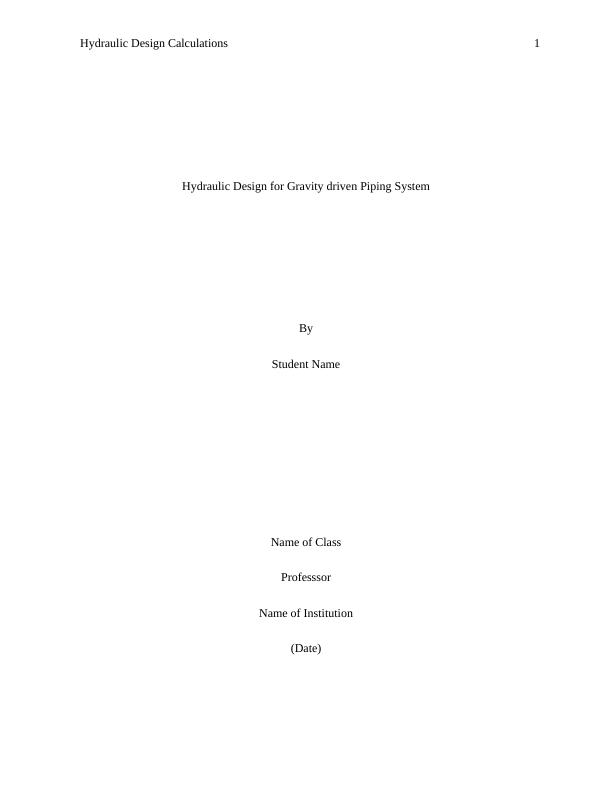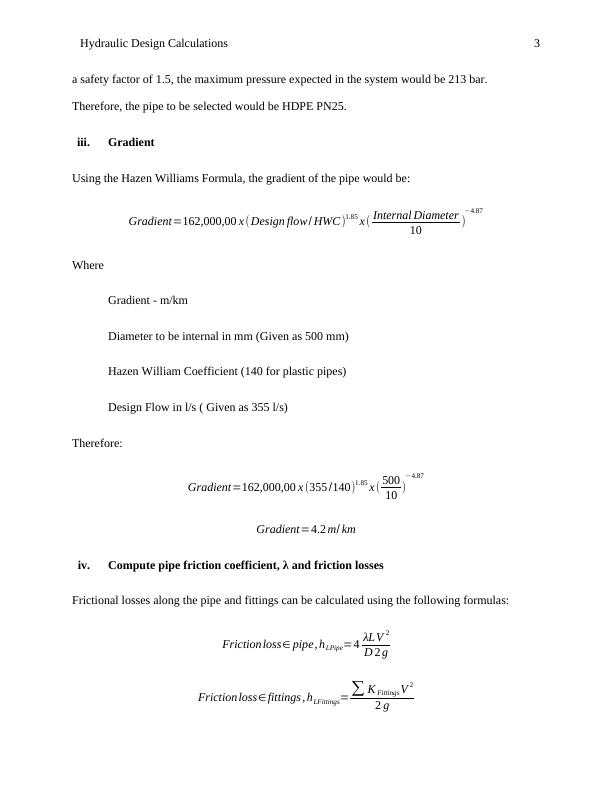Hydraulic Design for Gravity-Driven Piping System: Calculations, Pipe Selection, and Friction Analysis
12 Pages1492 Words495 Views
Added on 2023-04-25
About This Document
The given paragraph describes the hydraulic design for a gravity-driven piping system. It includes calculations for determining the diameter of the pipe, selecting the pipe material, calculating the gradient, friction losses, and pressure drop. The flow is determined to be turbulent, and the friction coefficient is calculated using the Blasius equation. The paragraph also mentions the magnitude and location of the hydrostatic force acting on the gate valve.
Hydraulic Design for Gravity-Driven Piping System: Calculations, Pipe Selection, and Friction Analysis
Added on 2023-04-25
ShareRelated Documents
End of preview
Want to access all the pages? Upload your documents or become a member.
Solutions 1.1 Provided information V = 1.15 m/s Q =315 L/s =
|5
|485
|308
Pump System Design - Task 1-5
|14
|1189
|440
Fluid Mechanics: Solutions for Pump Selection, System Characteristic Curve, NPSH Calculation, and Pipe Selection
|11
|2113
|126




